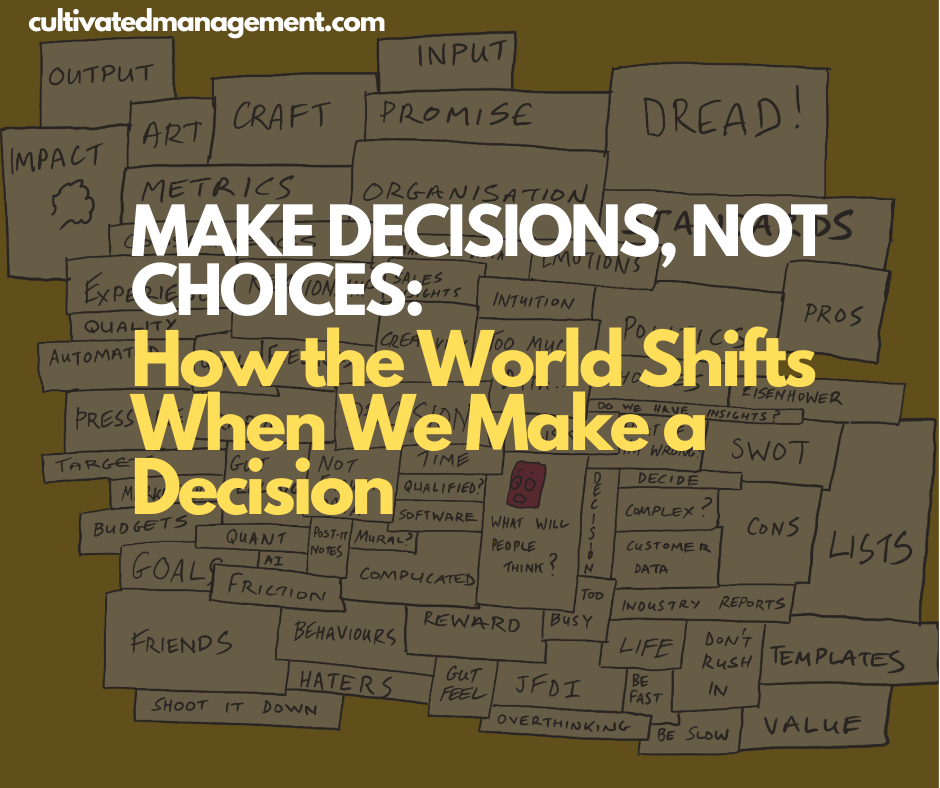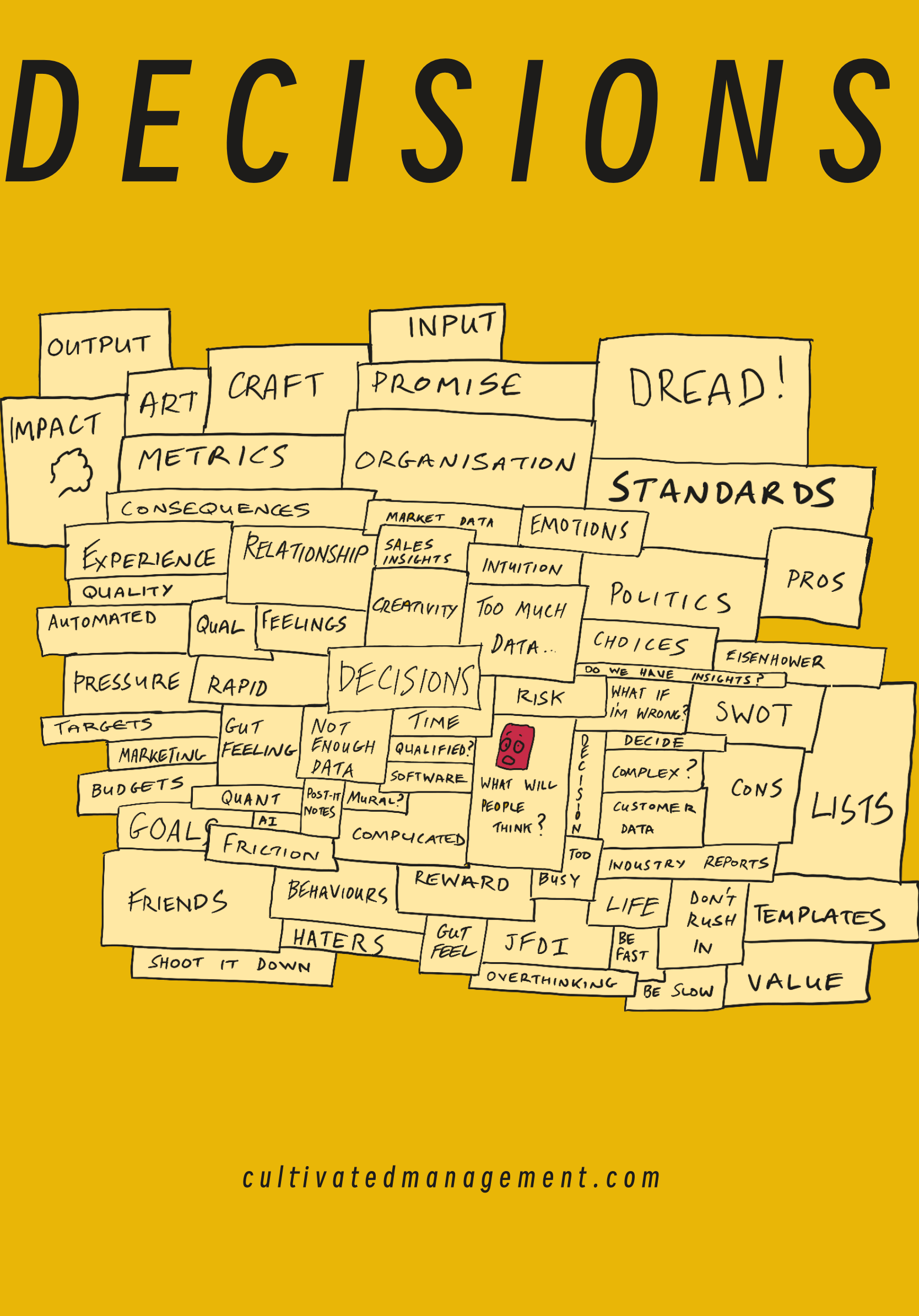
I’m not blessed with mathematical skills (you should see me trying to help my sons with GCSE maths). I’m not naturally at home with complex data sets, I couldn’t perform open-heart surgery (I’m far too squeamish), and I’d make a pretty poor engineer or architect. But one thing I can do is make business and life decisions.
For me, decision-making has always felt quite natural. I can weigh things up, commit, and move forward. But I also know that this doesn’t come easily for many people.
In business consulting I often see leaders and managers actually making choices instead of making decisions — or worse, avoiding the moment of truth altogether.
And yet here’s the twist: even doing nothing is a decision. You’re deciding to delay. You’re choosing to wait. You’re pushing the moment of commitment into the future—sometimes indefinitely.
W.H. Murray put it beautifully in The Scottish Himalayan Expedition:
“Until one is committed, there is hesitancy, the chance to draw back, always ineffectiveness. Concerning all acts of initiative (and creation), there is one elementary truth, the ignorance of which kills countless ideas and splendid plans: that the moment one definitely commits oneself, then Providence moves too.
All sorts of things occur to help one that would never otherwise have occurred. A whole stream of events issues from the decision, raising in one’s favour all manner of unforeseen incidents and meetings and material assistance, which no man could have dreamt would have come his way.”
This is the essence of decision-making. The moment we decide, something shifts. We close off alternatives, and in doing so, we release a kind of momentum. Doors open. Ideas surface. People appear to help. The energy around us begins to align.
It makes sense when you think about it.
The word decide comes from the Latin decidere, meaning “to cut off”. To decide is to cut away the other options. To remove the safety nets. To put all your weight, energy, and focus behind the path you’ve chosen. That’s why a true decision feels so different from simply picking an option — it’s an act of full commitment.
Of course, you don’t arrive at this point blindly and with wishful thinking. Ideally, you’ve studied the landscape, explored the possibilities, weighed the risks, gathered input from others, garnered some support and analysed the data.
You’ve looked at the benefits, the drawbacks, and the consequences. But once you’ve chosen your preferred path, the critical step is to commit fully.
That means building a plan. It means aligning yourself and your business behind it. It means expecting obstacles — and accepting them as part of the journey — while also trusting that new allies, insights and opportunities will appear along the way.
The problem is that many organisations never get to this point. Instead of decisions, they end up with half-hearted choices. Leaders “select” one option but keep the others on standby. They hold energy back. They spread attention thin. They hedge their bets. And unsurprisingly, progress stalls.
I’ve seen this play out repeatedly. A team “chooses” a path, but because they haven’t truly decided, no clear plan is built. Resources are kept back for Plan B. Some people even continue quietly working on Option C. The organisation’s attention is split, diluted, scattered. The energy never gathers behind one direction. And so, nothing really happens.
In my own life, the pattern is obvious. When I’ve made a true decision, everything in my world reorients itself. Challenges still appear — sometimes bigger than I’d expected — but because I know what I want, I find a way around them. I see solutions more clearly. People show up who want to help. Momentum builds. And eventually, something happens.
In business, the same dynamic applies. I’ve watched teams “choose” a course, only to abandon it the moment they hit their first obstacle. The leader retreats to Option 2. That falters, so they shift to Option 3. Years later, the strategy is no further forward.
This isn’t wishful thinking. It’s not “manifestation”. It’s focus and energy management. As Tony Robbins famously says (and forgive me for straying into motivational-speaker territory 😄): “Where focus goes, energy flows.”
That’s the heart of it. A real decision concentrates energy. It creates clarity. It forges momentum.
So the next time you’re in a meeting, and the data is on the table, the insights have been gathered, the relationships have been built — pause and ask yourself: are we making a decision, or are we just making a choice?
If it’s a decision, then act like it. Build the plan. Kill the alternatives. Commit all resources and attention. Expect obstacles and setbacks, but push forward anyway. Gather your team, align the business, and move.
Because when you truly decide, the world has a way of shifting with you. When you merely choose, don’t be surprised if very little changes at all.
A little artwork I did for this post:

